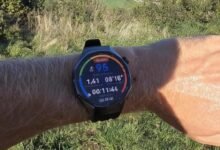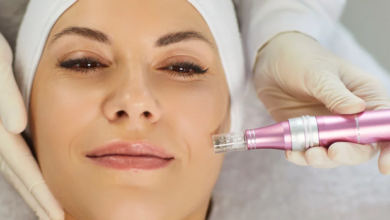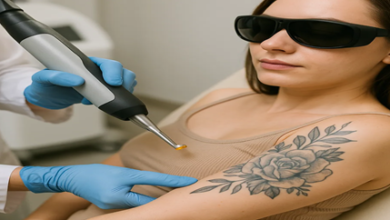Upper Eyelid Blepharoplasty: The Subtle Surgery That Can Transform Your Look

Our eyes are one of the first things people notice about us. They show emotion, energy, and even health. But as we age, the skin around the eyes can droop, making us look tired or older than we feel. This is where upper eyelid blepharoplasty comes in.
This type of eyelid surgery is small, safe, and highly effective. It can bring back a youthful look without changing who you are. In this article, we will explain what upper eyelid blepharoplasty is, why people choose it, what the surgery involves, and what results you can expect.
What Is Upper Eyelid Blepharoplasty?
Upper eyelid blepharoplasty is a type of blepharoplasty, also known as eyelid surgery. The goal is simple: to remove extra skin, fat, or muscle from the upper eyelids.
Over time, skin loses firmness. The upper eyelids may start to sag or develop folds. Sometimes, this makes people look tired, even when they are well-rested. In severe cases, sagging eyelids can even block part of vision.
By removing extra tissue, the surgeon creates a smoother, natural-looking eyelid that opens up the eyes and refreshes the face.
Why Do People Choose Upper Eyelid Blepharoplasty?
There are both cosmetic and medical reasons why people consider this surgery:
- Look Younger and Fresher: It reduces droopy eyelids, fine wrinkles, and puffiness.
- Boost Confidence: Many people feel more confident in photos, at work, or in social settings.
- Improve Vision: If sagging eyelids block vision, surgery can help restore a clear field of sight.
- Natural Results: Unlike more dramatic surgeries, upper eyelid blepharoplasty gives subtle changes that still look natural.
Who Is a Good Candidate for Eyelid Surgery?
This surgery is suitable for adults who:
- Have sagging or drooping upper eyelids
- Notice puffiness or extra folds of skin above the eyes
- Struggle with vision blocked by heavy eyelids
- Are healthy and have realistic expectations
Age is not always a factor. Some younger people choose blepharoplasty if they have inherited droopy eyelids or puffiness.
What Happens During the Surgery?
The process is simpler than most people think:
- Consultation – Your surgeon checks your eyelids, asks about your goals, and explains what results you can expect.
- Preparation – On the day of surgery, local anesthesia (numbing medicine) is usually given. Sometimes light sedation is added.
- The Procedure – A small cut is made in the natural fold of the eyelid. The surgeon removes or repositions skin, muscle, or fat. The cut is then closed with fine stitches.
- Recovery – Most patients go home the same day. The stitches are removed after about a week.
The surgery usually takes less than two hours.
Recovery After Upper Eyelid Blepharoplasty
Healing is quick compared to other types of surgery. Here’s what to expect:
- First few days: Mild swelling and bruising are normal. Cold compresses help reduce discomfort.
- One week later: Stitches are removed. Most swelling starts to fade.
- Two weeks later: Many patients return to normal activities and look refreshed.
- Final results: Full healing may take a few months, but results are visible early.
Most patients feel comfortable going out in public within 10–14 days.
Risks and Safety
Like all surgeries, blepharoplasty has some risks, but serious problems are rare when done by an experienced surgeon. Possible risks include:
- Swelling and bruising
- Dry eyes or irritation
- Uneven healing
- Infection or bleeding
Choosing a skilled surgeon lowers these risks and ensures natural results.
See also: Find Cat Veterinarian: A Complete Guide to Keeping Your Feline Healthy
How Long Do Results Last?
Results from upper eyelid blepharoplasty can last 10 years or more. The surgery does not stop aging, but it resets the clock by removing droopiness and puffiness. Many patients only need the surgery once.
Why This Surgery Is Called “Subtle but Transformative”
Unlike major cosmetic surgeries, eyelid surgery makes changes that are small but powerful. People often say they look more awake, younger, and healthier, but friends and coworkers may not even realize surgery was done. They just notice you look “better.”
That is why upper eyelid blepharoplasty is one of the most popular facial surgeries worldwide.
Cost of Upper Eyelid Blepharoplasty
The cost depends on location, the surgeon’s skill, and clinic facilities. In general, eyelid surgery is more affordable than many other cosmetic procedures. Some insurance plans may cover it if sagging eyelids affect vision.
Always ask your clinic for a detailed estimate, including surgeon fees, anesthesia, and follow-up visits.
Conclusion
Upper eyelid blepharoplasty is a simple yet life-changing procedure. It helps people look younger, feel more confident, and in some cases, even see better. With a short recovery time and long-lasting results, this form of eyelid surgery is a smart choice for those wanting a natural, refreshed appearance.
If you’re thinking about it, consult with a trusted surgeon to learn more. A short surgery could make a lasting difference in how you look and feel.
FAQs
1. How long does upper eyelid blepharoplasty take?
The surgery usually takes 1–2 hours and is done on the same day.
2. Is eyelid surgery painful?
Most patients feel little to no pain during surgery due to anesthesia. Some mild discomfort after is normal.
3. Can blepharoplasty improve my vision?
Yes, if sagging eyelids block part of your vision, surgery can help restore a clear view.
4. When can I return to work after eyelid surgery?
Many patients go back to work in about 1–2 weeks, depending on healing.
5. How long will the results of upper eyelid blepharoplasty last?
The results often last 10 years or more. Some people never need the surgery again.







